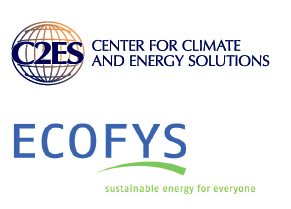Ecofys and the Center for Climate and Energy Solutions (C2ES) have published the second volume of the US-German Clean Energy Leadership Series.
Volume II focuses on the theme 'Public Engagement in the Clean Energy Transition' and compiles best practices from the US and Germany of directly involving the public in clean energy policies, influencing consumer spending decisions, driving development through personal investments, and various other aspects of community engagement in the energy sector.
 15 December 2014: Ecofys and the Center for Climate and Energy Solutions (C2ES) have published the second volume of the US-German Clean Energy Leadership Series. Volume II focuses on the theme ‘Public Engagement in the Clean Energy Transition.’ The publication compiles best practices from the US and Germany for directly involving the public in clean energy policies, influencing consumer spending decisions, driving development through personal investments and various other aspects of community engagement in the energy sector.
15 December 2014: Ecofys and the Center for Climate and Energy Solutions (C2ES) have published the second volume of the US-German Clean Energy Leadership Series. Volume II focuses on the theme ‘Public Engagement in the Clean Energy Transition.’ The publication compiles best practices from the US and Germany for directly involving the public in clean energy policies, influencing consumer spending decisions, driving development through personal investments and various other aspects of community engagement in the energy sector.
The publication offers statistics on public support for clean energy in each country for comparison, and each section features side-by-side examples. The volume reports that, while strong majorities in both countries support expanding clean energy, with solar and wind most popular, Germany has higher support for renewables. In examining voters’ choices in state ballot initiatives concerning renewable portfolio standards (RPS) in the US, the authors find more often than not, when given the opportunity, citizens have voted in favor of the RPS.
A German example of public participation illustrates a planning process that involved a survey and a ‘citizens expert reporting group’ including 15 citizen members. The group recommended installing a biogas combined-heat-and-power station, with highly successful results. On driving the energy transition through personal investments, the authors demonstrate how feed-in tariffs (FiT) in Germany and net metering in the US stimulated the growth of distributed ownership of generation capacity.
Other cases illustrated in the volume include green pricing and green electricity markets that allow individual consumers to buy electricity generated from clean sources without having to purchase their own solar panels or wind turbine, as well as community choice aggregation (CCA) and cooperatives that allow communities to jointly purchase electricity from renewable sources.
In conclusion, the authors point out that public participation in the energy sector can drive demand for renewables, while also offering an avenue for deploying and consuming cleaner electricity, even when governments are slow to embrace a transition to renewable energy. [Ecofys Publication Webpage] [C2ES Publication Webpage] [Publication: US-German Clean Energy Leadership Series (Volume II)]